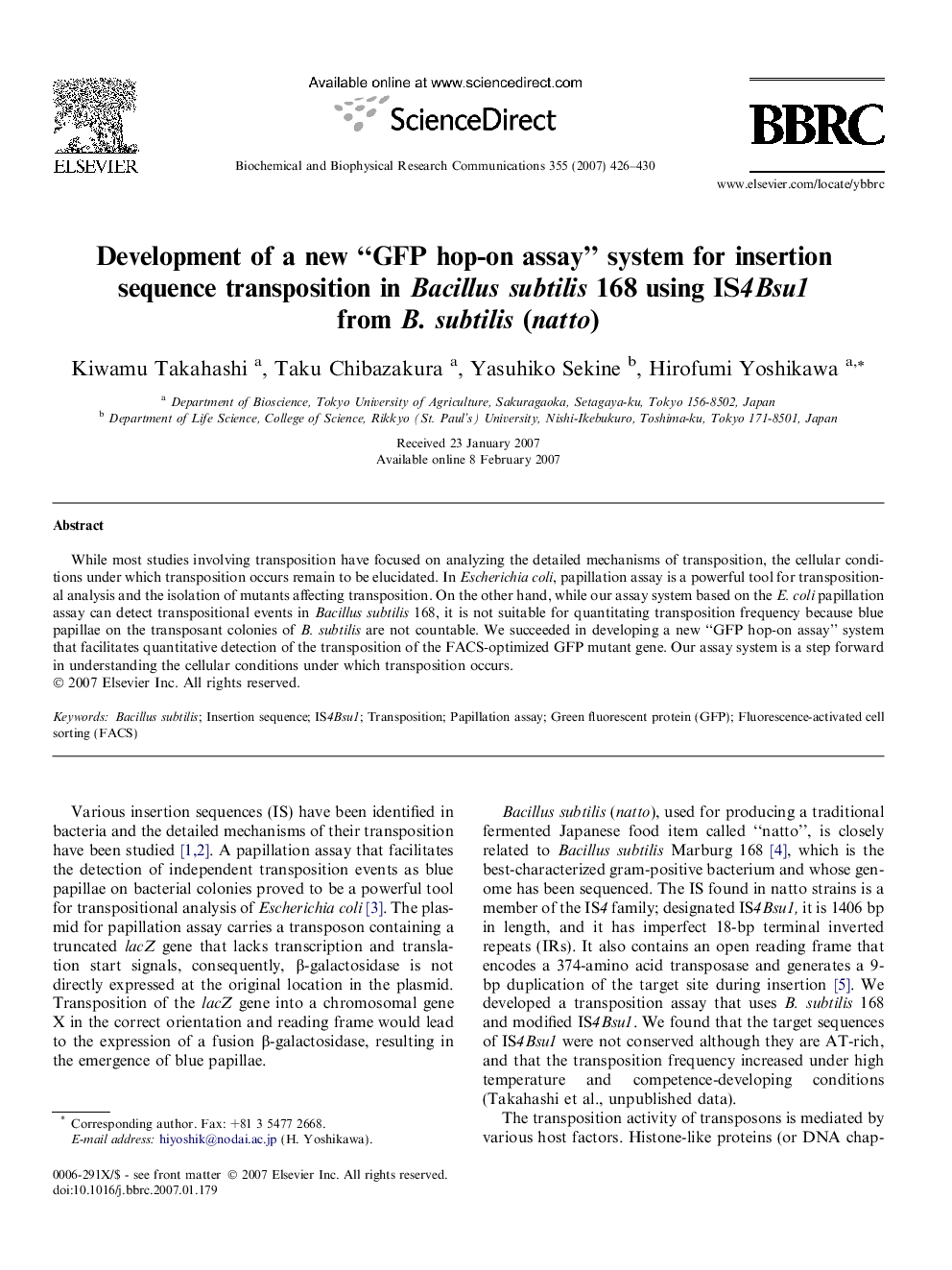| Article ID | Journal | Published Year | Pages | File Type |
|---|---|---|---|---|
| 1937437 | Biochemical and Biophysical Research Communications | 2007 | 5 Pages |
While most studies involving transposition have focused on analyzing the detailed mechanisms of transposition, the cellular conditions under which transposition occurs remain to be elucidated. In Escherichia coli, papillation assay is a powerful tool for transpositional analysis and the isolation of mutants affecting transposition. On the other hand, while our assay system based on the E. coli papillation assay can detect transpositional events in Bacillus subtilis 168, it is not suitable for quantitating transposition frequency because blue papillae on the transposant colonies of B. subtilis are not countable. We succeeded in developing a new “GFP hop-on assay” system that facilitates quantitative detection of the transposition of the FACS-optimized GFP mutant gene. Our assay system is a step forward in understanding the cellular conditions under which transposition occurs.
